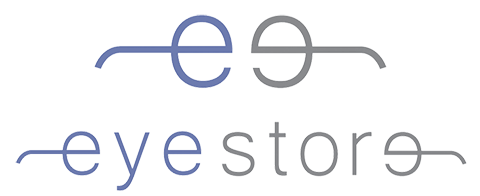Eye Tests for Contact Lenses

Contact lenses are a great alternative to wearing glasses. Contact lenses can enhance your quality of life by providing clear vision and offer a wide range of options. Each patient is different, with some patients wearing contact lenses only on weekends, special occasions or just for sports. That is the beauty of contact lens wear, the flexibility it gives each individual patient and their lifestyle.
If you decide to opt for contact lens wear, it is very important that the lenses fit properly and comfortably and that you understand contact lens safety and hygiene. A contact lens exam will include both a comprehensive eye test to check your overall eye health, your general vision prescription and then a contact lens consultation and measurement to determine the proper lens fit.
The Importance of a Comprehensive Eye Test
Whether or not you have vision problems, it is important to have your eyes examined regularly to ensure they are healthy and that there are no signs of a developing eye condition. A comprehensive eye test will check the general health of your eyes as well as the quality of your vision. During this exam the optometrist will determine your prescription for glasses, however this prescription alone is not sufficient for contact lenses. The optometrist may also examine your eyes and tears for any eye health issues that could interfere with the comfort and success of contact lens wear.
Hard To Fit Contact Lens Patients
Even if you've been told you can't wear contact lenses, we may be able to help. Specialty contacts are available for patients with dry eyes, severe astigmatism, keratoconus and more.
The Contact Lens Consultation
The contact lens industry is always developing new innovations to make contacts more comfortable, convenient and accessible. Therefore, one of the initial steps in a contact lens consultation is to discuss with your optometrist some lifestyle and health considerations that could impact the type of contacts that suit you best.
Some of the options to consider are whether you would prefer daily disposables or monthly disposable lenses, as well as soft versus rigid gas permeable (RGP) lenses. If you have any particular eye conditions, such as astigmatism or dry eye syndrome, your optometrist might have specific recommendations for the right type or brand for your optimal comfort and vision needs.
Now is the time to tell your optometrist if you would like to consider coloured contact lenses as well. If you are over 40 and experience problems seeing small print, for which you need glasses to clearly read, use a computer or see close objects, your optometrist may recommend multifocal lenses or a combination of multifocal and monovision lenses to correct your unique vision needs.
Contact Lens Fitting
One size does not fit all when it comes to contact lenses. Your optometrist will need to take some specific measurements to provide the optimum fitting contact lenses. Contact lenses that do not fit correctly could cause discomfort, blurry vision or even damage the eye. Here are some of the measurements your optometrist will take for a contact lens fitting:
Corneal Curvature
In order to assure that the fitting curve of the lens properly fits the curve of your eye, your optometrist will measure the curvature of the cornea or front surface of the eye. The curvature is measured with an instrument called a keratometer to determine the appropriate curve for your contact lenses. If you have astigmatism, the curvature of your cornea is not perfectly round and therefore a “toric” lens, which is designed specifically for an eye with astigmatism, would be needed to provide the optimal vision and lens fit. In certain cases your optometrist may decide to measure your cornea in greater detail with a 3D mapping of the corneal surface called corneal topography.
Pupil or Iris Size
Your optometrist may measure the size of your pupil or your iris (the coloured area of your eye) with an instrument called a biomicroscope or slit lamp or measure this manually with a ruler or card. This measurement is especially important if you are considering specialised hard lenses such as Rigid Gas Permeable (RGP) contacts.
Tear Film Evaluation
One of the most common problems affecting contact lens wear is dry eyes. If the lenses are not kept adequately hydrated and moist, they will become distorted and uncomfortable and your eyes will feel dry, irritated and itchy. Particularly if you have dry eye syndrome, your optometrist will want to make sure that you have a sufficient tear film to keep the lenses moist and comfortable, otherwise, contact lenses may not be a suitable vision option.
A tear film evaluation is performed by the optometrist examining both the water and oil content of the tears. These are assessed by putting a drop of liquid fluorescein dye on your eye and then viewing your tears with a slit lamp or by placing a special strip of paper under the lid to absorb the tears to measure the amount of moisture is in your tears. If your tear film requires improvement, your optometrist may recommend certain types of contact lenses that are more successful in maintaining moisture and possibly the use of specific eye drops.
Contact Lens Trial and Prescription
After deciding which design and brand of lenses that could work best with your eyes, the optometrist may have you try on a pair of lenses to confirm the fit and comfort before finalising and ordering your lenses. The optometrist, or their assistant, will insert the lenses and keep them in for 15-20 minutes before the optometrist exams the fit, movement and position of the lenses as well as your vision and eye comfort. Only after this trial fitting, and the lenses appear to be a good fit, your optometrist will order you new contact lenses. Your optometrist will also provide lens care and hygiene instructions including teaching you how to insert and remove your lenses, how long to wear them and how to store and clean them, if relevant.
Follow-up
Your optometrist will request that you schedule a follow-up appointment to check that your contact lenses are fitting properly and that your eyes are adjusting properly. If you are experiencing discomfort or dryness in your eyes you should contact or visit your optometrist as soon as possible. Your optometrist may decide to try a different lens, a different contact lens disinfecting solution or to try an adjustment in your wearing schedule.
Contact us today to schedule your contact lens exam and fitting.
